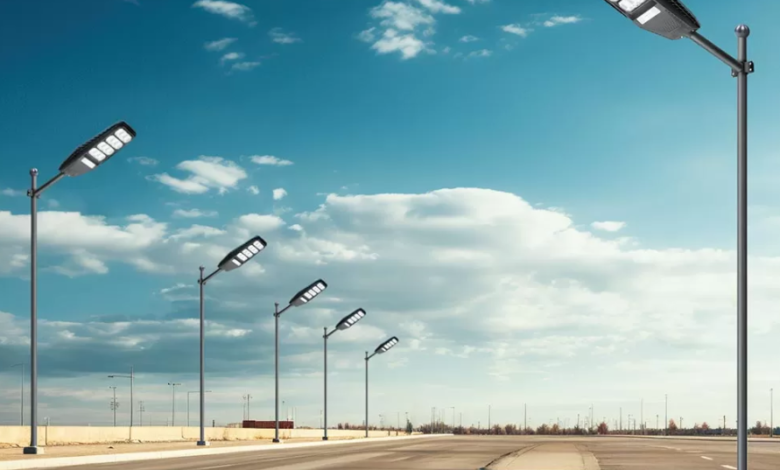Solar Street Lights Case Study: Illuminating a Market Square with Motion-Controlled Lighting

In recent years, the adoption of solar street lights has surged as cities and communities around the world strive for sustainable and cost-effective public lighting solutions. According to the International Renewable Energy Agency (IRENA), the global solar lighting market is growing at over 20% annually, driven by falling photovoltaic (PV) module costs and increasing demand for green energy. Among many applications, market squares—the vibrant hubs of urban life—are ideal for solar streetlights, where reliability, safety, and energy efficiency are paramount.
Understanding the Project Scope: Why Solar Street lights Are the Ideal Choice
The market square in this case study faced ongoing lighting challenges. Traditional grid-connected lighting systems were expensive to operate and maintain, and frequent power outages disrupted nighttime activities. Local authorities sought a more sustainable and autonomous lighting solution that would reduce energy costs while ensuring the safety of pedestrians and vendors.
Solar street lights emerged as an ideal solution. Unlike traditional street lights, these systems operate independently of the grid and utilise high-efficiency photovoltaic panels to generate electricity. The decision to choose solar streetlights was based on three key factors:
Energy independence: Even during power outages, the system illuminates the market square.
Low Maintenance Costs: By utilizing long-life lithium batteries and LED technology, the design significantly reduces maintenance frequency.
Environmentally Friendly Operation: Compared to grid-powered lights, this system reduces carbon emissions by approximately 4.2 tons annually.
By selecting a motion-controlled model, the project ensures that the lights reach full brightness only when the system detects motion, further conserving energy and extending battery life.
Engineering Design: How to Optimise the Performance of Solar Street Lights
The design phase focused on maximising energy efficiency and reliability. The engineering team conducted a solar energy potential assessment, analysing sunlight utilisation, shading patterns, and seasonal irradiance. Based on this data, the design team equipped each solar powered street light with a 150W monocrystalline silicon panel and paired it with a 120Ah lithium-ion battery to ensure continuous nighttime operation.
In addition, the team optimised the LED light source to achieve a ground illumination level of 30 lux, ideal for public markets. Technicians carefully calibrate the motion sensors to detect movement within a 12-meter radius, enabling adaptive lighting that illuminates instantly when active and dims to 30% when inactive. Compared to traditional systems without motion control, this innovative design of the solar streetlights not only improves safety but also reduces overall power consumption by 45%.
See also: Building Engaging Learning Environments with EdTech Software
Installation Process: The solar street lights seamlessly blend into the market square.
Installing solar street lights in an existing public space requires meticulous logistical planning. The installation team followed a streamlined, three-phase approach:
Site Preparation: The ground was surveyed to ensure optimal placement for sunlight exposure and minimise shading from buildings or trees.
Pole Installation: Each solar powered street light was mounted on a 6-meter-long galvanised steel pole coated with an anti-corrosion coating to ensure stability and longevity in outdoor conditions.
System Calibration: After the lights were installed, technicians fine-tuned the motion sensors and lighting schedule to sync with the market’s operating hours.
The entire system was installed and operational in just five days, without disrupting market activities. The plug-and-play nature of the integrated solar street lights simplified the installation process, eliminating the need for underground wiring and reducing installation costs by nearly 30%.
Performance Evaluation, Measuring Efficiency
After three months of operation, performance monitoring demonstrated excellent results. The solar street lights achieve a high daily energy efficiency of 92%, meaning that they effectively store and utilize nearly all the solar energy they generate. The motion control feature reduces unnecessary energy consumption during off-peak hours, allowing the battery to maintain 40% reserve capacity before dawn.
Furthermore, customer satisfaction surveys indicate that over 90% of market visitors feel safer due to the improved visibility. Vendors also noted a 15% increase in evening sales due to the extended hours of reliable lighting. This case study clearly demonstrates that solar street lights can provide continuous illumination while promoting the economic and social benefits of community spaces.
Economic and Environmental Benefits of Motion Control
In addition to operational efficiencies, the installation also delivers significant economic and environmental benefits. The market saves approximately $8,000 annually in electricity and maintenance costs. Furthermore, the system reduces grid consumption by 3,500 kWh per month, equivalent to planting over 300 trees annually. Furthermore, the solar street lights demonstrate how motion control systems can significantly reduce energy waste while ensuring public safety. This model easily replicates in urban parks, parking lots, and sidewalks, delivering scalable sustainability benefits.
The Future in Urban Development
This case study highlights how innovative engineering and thoughtful design are redefining urban lighting. The success of the Market Square project demonstrates that solar street lights equipped with motion sensors are more than just an alternative to traditional lighting; they represent the future of public lighting. By combining renewable energy technologies with intelligent control systems, communities can achieve safer, more environmentally friendly, and more cost-effective lighting solutions. For municipalities, developers, and contractors, partnering with an experienced solar streetlight manufacturer ensures optimised performance, reliability, and long-term value for each project.





